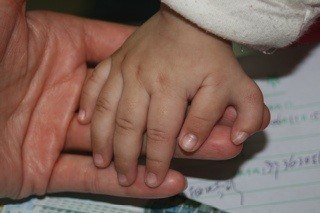Polydactyly and duplicate thumb

Literally translated, polydactyly means “many fingers”. This term refers to the condition of too many fingers. Most commonly, there is an extra rudimentary digit next to the little finger. Sometimes the extra digit is just a little nubbin, sometimes a small nodule attached by a thin stalk, or at times a more fully formed finger. These extra digits on the little finger side of the hand are referred to as “post-axial polydactyly”, an extra thumb is referred to as “pre-axial polydactyly”. Duplicate thumbs can range from what looks like a double thumb tip to a complete second thumb growing from the base of the main thumb. Post-axial polydactyly is often treated in the newborn nursery by your paediatrician, but at times can require the intervention of a hand surgeon. For pre-axial polydactyly, however, evaluation and discussion of treatment with a hand surgeon is usually required. While surgery is often delayed until your child is 18-24 months old, earlier evaluation is recommended, in case there is something that might compel the consideration of earlier intervention. Please bring your newborn in for evaluation as soon as you can – even if immediate treatment is not indicated, we are able to follow the growth of your baby’s hand, and intervene when appropriate.




